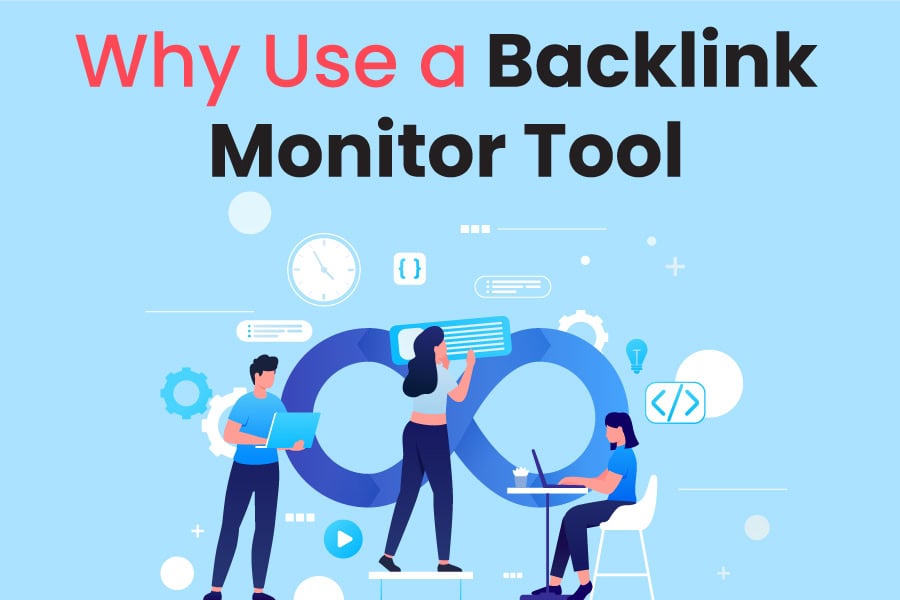Have you ever wondered why some websites consistently rank higher on search engine results pages (SERPs) while others struggle to gain visibility?
The secret lies in their backlink profile. Backlinks are among Google’s top three ranking factors; therefore, websites with high-quality backlinks tend to rank higher in search engine results.
A backlink monitoring tool assists you in tracking inbound links and identifying potential improvement opportunities. It also allows you to analyze competitor strategies and ensure the health and quality of your backlink profile.
Ultimately, using a backlink monitor tool enhances your website’s search engine visibility and authority.
Imagine if your website’s ranking suddenly drops, and you’re clueless about the cause. Effective backlink monitoring could be the game-changer to ensure your website doesn’t fall into this statistic.
However, proper backlink monitoring can help you identify opportunities and avoid search engine penalties.
Explore backlink monitor tools more, unraveling their importance and benefits. Learn how SEO with Julhas can help you revolutionize your SEO strategy.
What Is a Backlink Monitor Tool?
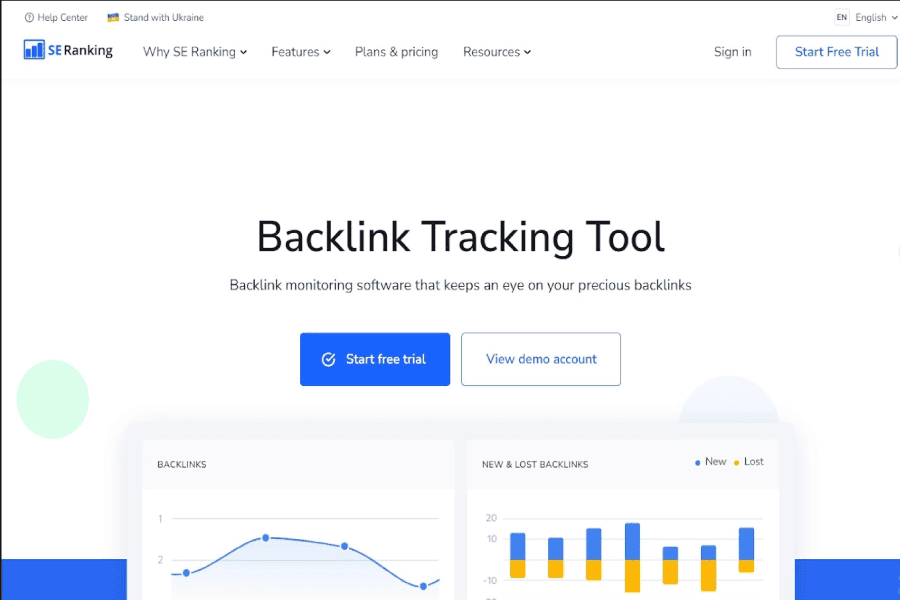
Image source: shoutmeloud
A backlink monitoring tool is a software or online service designed to track and analyze the inbound links pointing to your website. It offers insights into the quantity, quality, and source of backlinks.
This helps you assess your link profile’s health, find areas for improvement, and monitor the effectiveness of your link-building efforts.
Additionally, these tools often offer features like competitor analysis, anchor text analysis, and historical data tracking to boost your website’s search engine ranking and authority.
They provide data on all the links pointing to your site, including insights into your competitors’ backlinks.
What are backlinks?

A backlink is a reference from one website to another, typically viewed as a vote of credibility in SEO. They are links on external sites that direct traffic to your own. The more high-quality backlinks you gather, your website’s search ranking will likely be better.
Why Are Backlinks Important for SEO?
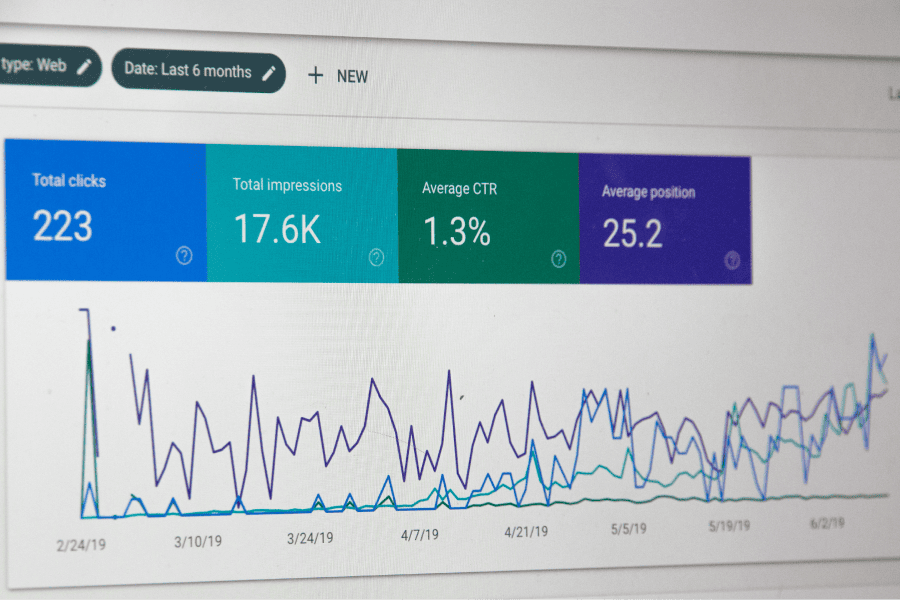
Backlinks are crucial for SEO because they signal to search engines that your content is valuable and worthy of ranking well.
When other sites link to yours, it’s like receiving a recommendation, boosting your website’s trustworthiness.
High-quality backlinks, especially from authoritative sources, enhance your site’s authority and credibility.
For instance, analyzing search results for popular keywords reveals that top-ranking pages often have thousands of backlinks from reputable domains like Microsoft.com.
While various factors influence Google rankings, backlinks play a significant role in driving organic traffic and helping search engines discover and rank your content effectively.
Types of Backlinks
There are several categories of backlinks. These include:
Natural backlinks: Natural backlinks are earned through genuine relationships and high-quality content, not artificially generated. They’re essential for establishing credibility and authority in SEO.
They’re voluntarily placed by other websites based on the merit of your content, are diverse in type, and are earned over time. They’re crucial for improving authority, visibility, traffic, and credibility.
Outreach backlinks: Outreach backlinks involve contacting other websites to secure links to your site. These links signal valuable information to search engines, thus boosting SEO ranking. They require relationship-building, research, communication, and trust.
Self-created backlinks: Self-created backlinks are generated through blog comments or signatures. Search engines generally devalue them and may lead to penalties for aggressive self-linking.
Why Is It Important To Use a Backlink Monitor Tool for SEO?
Using a backlink monitoring tool for SEO is essential because it helps you:
- Identify and Assess Link Quality: Backlink monitor tools help analyze relevance, anchor text, and domain authority to ensure high-quality backlinks.
- Evaluate Linking Domain Authority: They assess trust flow and relevance to prioritize valuable backlinks.
- Competitor Analysis: Backlink monitor tools often offer competitor analysis features. These enable you to compare your backlink profile with competitors’ profiles, thus understanding their strategies and identifying potential areas to outperform them.
- Analyze Anchor Texts and Relevance: Backlink monitor tools help you understand the context and improve search rankings by focusing on relevant anchor texts.
- Understand Link Profile: Backlink monitor tools offer insights into backlink quality, identify issues, and improve overall website authority.
- Track Number and Growth of Backlinks: Backlink monitor tools monitor link-building efforts’ effectiveness and identify improvement opportunities.
- Detect Negative SEO Attacks: Backlink monitor tools identify spammy or harmful backlinks and take action to protect your website’s reputation.
- Identify and Disavow Harmful Backlinks: Backlink monitor tools regularly track and remove harmful backlinks to maintain a healthy website.
Challenges in Backlink Monitoring
Here are some common challenges in backlink monitoring:
- Spam Backlinks: These are created to manipulate rankings and can harm your site’s credibility. Avoid automated link building, comment spam, directory submission spam, link farms, and blog spam.
- Quality Assessment: Not all backlinks are created equal. Assessing the quality of backlinks is essential for maintaining a healthy link profile.
- Linking to Low-Quality Websites: Links to such sites should reflect better on yours and may lead to penalties. Avoid linking to sites engaged in spammy or unethical practices.
- Tracking Changes Over Time: Backlink profiles are dynamic and constantly evolving. Tracking changes over time is crucial for maintaining a solid SEO strategy.
- Linking to Irrelevant Sites: Linking to irrelevant, banned, or penalized sites confuses search engines and impacts user experience negatively.
- Broken Links: Broken links lead to poor user experience and harm SEO. Check for and fix broken links on your site regularly.
- Backlinks with Redirect Chains: Redirect chains slow down loading times, confuse search engines, and dilute link equity. Ensure redirects are direct and consolidated.
- Link Schemes: Manipulative methods like link farms, exchanges, paid links, and redirects violate guidelines and risk penalties or bans.
- Overuse of Exact Match Anchor Text: While helpful in moderation, overusing exact match anchor text can appear spammy and limit traffic. Vary anchor text types to maintain a natural link profile.
- Hidden Links: These violate guidelines and can result in penalties. Only use visible links to maintain transparency and avoid search engine issues.
- Lost Backlinks: Lost backlinks are expected over time and can be recovered by checking if links were removed, updating linked pages, and regularly monitoring your backlink profile.
Features To Look for in a Backlink Monitor Tool
To effectively monitor backlinks for SEO, consider the following features when choosing a backlink monitoring tool:
- Automated Reports: Look for tools that automatically generate reports on your backlinks to save time and keep you updated.
- Access Levels: Ensure the tool allows different access levels for clients and staff, maintaining security and confidentiality while sharing relevant data.
- Dashboard Quality: Choose a tool that offers a white-label dashboard for branding with your logo and colors, providing clients with a professional appearance.
- Integration with SEO Tools: Consider tools that seamlessly integrate with other SEO and digital marketing tools you use, such as Google Analytics or Google Search Console.
- Data Visualization: Select a tool with robust data visualization features for more straightforward interpretation and action on the data.
- Alerts Channels: Opt for a tool that sends alerts through various channels, such as email, SMS, or Slack, to inform you of essential real-time changes.
- Size of Backlink Database: Assess the size and quality of the tool’s backlink database for accurate insights into your backlink profile.
- Competitor Analysis: Some tools offer competitor backlink monitoring, helping identify opportunities and gaps in your strategy.
- Disavow Feature: Look for tools with a built-in disavow feature to manage toxic or unwanted backlinks and maintain a healthy link profile.
Considering these features, you can choose a backlink monitoring tool that best fits your needs and effectively enhances your SEO strategy.
Popular Options of Backlink Monitoring Tools
When monitoring backlinks, consider using SEO tools for efficient tracking. Here are popular options:
Google Search Console: Ideal for beginners, it offers basic backlink monitoring features. You can assess linking domains, view top linking sites and keywords, and check frequently linked URLs.
Ahrefs: It is a powerful tool for backlink monitoring, keyword research, and analytics. It provides insights into page authority, referral traffic, and link status. However, it’s not free, and it offers various pricing options.
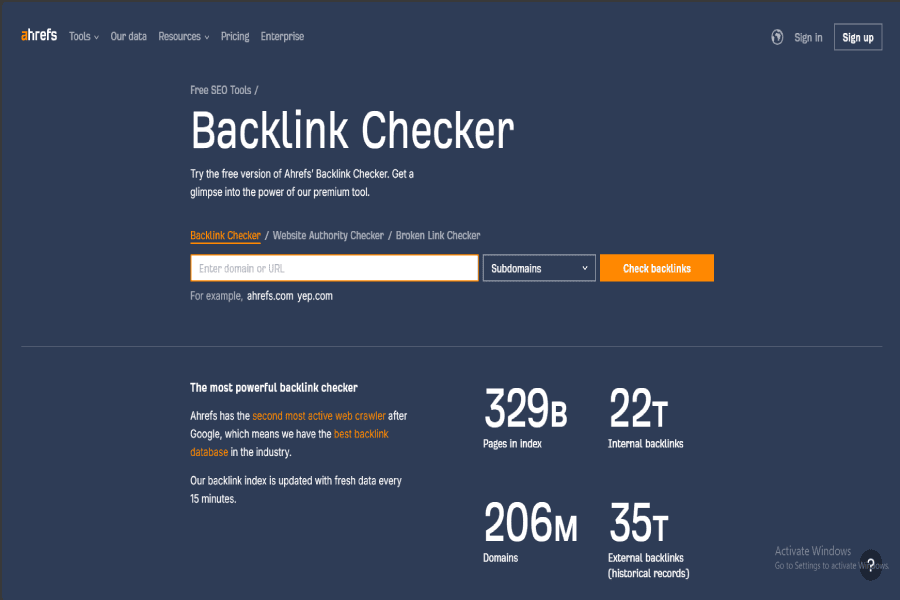
Image source: Ahrefs
Moz: This renowned SEO tool includes a backlink monitoring feature in its suite. With Moz, you can easily find, assess, fix, and report your backlinks using its intuitive interface.
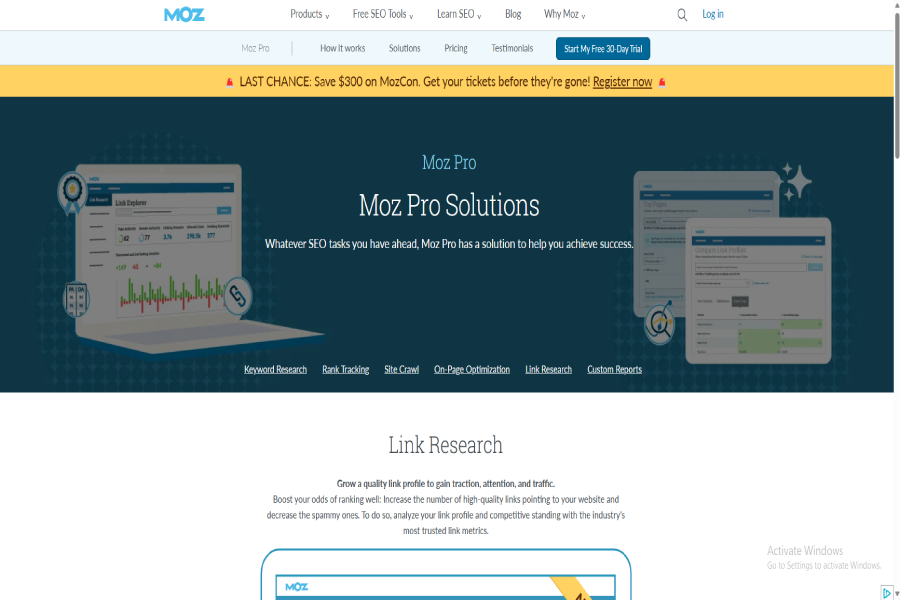
Image source: Moz
SEMrush: It is another reliable tool for tracking backlinks, although it is not free. It offers backlink monitoring and auditing features To maintain the wellness of your backlink profile and identify potentially harmful links.
Remember to choose the tool that best suits your budget and needs to maintain a strong backlink profile for your website.
How Can You Choose the Right Backlink Monitor Tool?
Choosing the right backlink monitoring tool is crucial for optimizing your SEO strategy. Here’s how to make the best choice:
- Determine your specific requirements for backlink monitoring, such as the size of your website, the number of backlinks you have, and the level of detail you need in reports.
- Explore different backlink monitoring tools available in the market. Consider factors like features, pricing, user reviews, and customer support.
- Evaluate the essential features such as automated reporting, white-label dashboard, client and staff access controls, alerts (email, SMS, Slack), backlink database size, data visualization, competitor analysis, disavow feature, and integration with other SEO tools.
- Assess each tool’s pricing plan and compare it against your budget. Choose a tool that offers the best value for money based on your requirements.
- Many backlink monitoring tools offer free trials or demo versions. Use these to test the tool’s functionality and determine if it meets your needs.
- Ensure the tool provides reliable customer support, including documentation, tutorials, and responsive assistance in case of any issues.
- Choose a tool that can scale with your business as it grows. Ensure it can accommodate increasing backlinks and users without compromising performance.
- Review the accuracy and reliability of the backlink data provided by the tool. Look for tools with a reputation for delivering accurate and up-to-date information.
- Consider feedback and reviews from current users to gauge the tool’s performance, reliability, and ease of use.
What Are the Best Practices for Backlink Monitoring?
To monitor your backlinks effectively, follow these best practices:
- Utilize tools like Google Search Console, Ahrefs, Moz, or SEMrush to compile a list of websites linking to yours. Export this data to a spreadsheet for analysis.
- Sort backlinks by factors like domain authority or acquisition date to prioritize review and identify trends.
- Visit each linking site to assess its quality, relevance, and authority. Consider factors such as relevance to your niche, domain authority, link placement, and anchor text diversity.
- Take notes in your spreadsheet as you review each backlink, noting quality, placement, and any necessary actions, such as outreach for removal or disavowal.
- Update your backlink data regularly to track new acquisitions or lost links. This will ensure you stay informed and can take appropriate action when needed.
What Are the Future Trends in Backlink Monitoring?
In SEO, backlinks remain pivotal for ranking and visibility in search engines. Currently, high-quality, authoritative backlinks impact search rankings, driving organic traffic to your site. Strategies like outreach, guest posting, and compelling content are effective but time-consuming.
Looking ahead, the future of backlinks will center on content-centric approaches. Search engines prioritize content quality, demanding high-quality, informative, and engaging content for organic backlink acquisition.
User experience (UX) will play a vital role, with well-designed, mobile-friendly websites having an advantage in acquiring backlinks. Moreover, social signals’ influence on backlinks will increase as social media dominates online interactions.
Websites garnering attention and shares on platforms like Facebook, Twitter, and Instagram will likely gain more backlinks. Video content integration is rising, with video-related backlinks improving search engine rankings.
To keep pace with evolving trends, invest in quality content creation, enhance user experience, leverage social media engagement, integrate video content, and stay updated on SEO trends and algorithm updates.
Adapting strategies accordingly will ensure your brand’s online presence leads the pack in the ever-changing landscape of link building.
Conclusion
In SEO, backlink monitoring is vital for online success. Monitoring your backlink profile ensures your website maintains authority and visibility in search results.
Utilizing a backlink monitor tool offers a myriad of benefits. These include identifying link quality, tracking competitor strategies, and safeguarding against negative SEO attacks. It’s the proactive approach that separates successful websites from the rest.
Looking forward, the future of backlink monitoring lies in content-centric strategies, user experience optimization, and leveraging social signals and video content. Adapting to these trends is crucial for staying ahead in the ever-evolving landscape of SEO.
Empower your SEO journey with SEO with Julhas, your trusted partner in achieving top rankings. From comprehensive website audits to strategic link-building tactics, we’re here to elevate your online presence. Take the next step towards SEO excellence and join us on the path to digital success.

